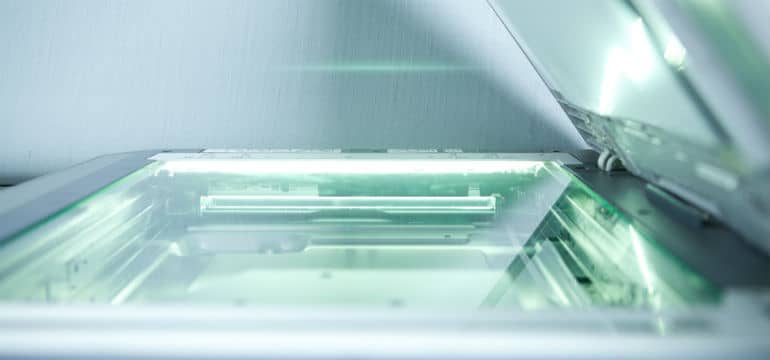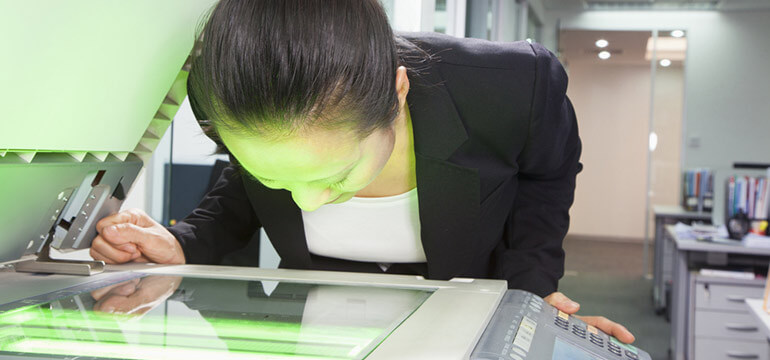Answer these simple questions and we will find you the BEST prices
Which type of solar quotes do you need?
It only takes 30 seconds
100% free with no obligation

Get up to 4 quotes from our selected suppliers by filling in only 1 form

Save money by comparing quotes and choosing the most competitive offer

Our service is 100% free and with no obligation
- Market-Inspector.co.uk
- Blog
- Is Your Photocopier Trying to Kill You? Myths about Photocopier Health Hazards
Is Your Photocopier Trying to Kill You?
Some people express concern in regards to photocopiers posing a health risk to users. This might be fuelled by rumour or general exaggeration, therefore it is our goal to shed some light on the topic and put to rest any unfounded worries.

Ozone
One of the most common concerns among office workers is the consequences of exposure to ozone.
Firstly, ozone is a naturally occurring form of oxygen (O3) found in the Earth’s atmosphere. This colourless gas has a distinct odour and due to its highly reactive and unstable nature, at room temperature, decomposes easily to oxygen.
Secondly, it is produced whenever oxygen reacts with sufficient ultraviolet radiation or electrical discharge. This includes events such as lightning storms.
Lastly, ozone is used to improve air quality in offices using its bacteria inhibiting properties. It is used in very small quantities and carries no health risks.
The ozone produced by working with a photocopier poses no threat, unless it builds up as a result of negligence when placing the machine in a small, badly ventilated room. Usually manufacturers provide recommendations that must be followed by whoever installs the photocopier, thus preventing any breach of the Occupational Exposure Standards (OES).
Toner
Toner used by photocopiers and laser printers in the printing process is another common concern. It is a very fine powder, which is not dangerous to health. As with all dust, however, it may cause irritation of the respiratory system if one is exposed to a high concentration of it.

The most common reason for toner exposure involves accidents during cartridge renewal. In those cases, toner may become airborne. Although it is considered nothing more than a nuisance dust and has no health effects other than irritation, people who are highly sensitive to dust particles or have a medical condition (e.g. asthma, bronchitis) are advised to avoid changing toner cartridges.
In case of spillage, the best practice is to vacuum the dust as carefully as possible in order to avoid creating a dust cloud.
Carbon Black
Carbon black is powder used as a pigment and can comprise between 5-10% of toner. Years ago, Swedish scientists raised the concern that it may be carcinogenic, thus forcing the manufacturers of carbon black to change their production process. In 2010, the International Agency for Research on Cancer concluded that there is inadequate evidence to conclude that carbon black is carcinogenic to humans.
Electric and magnetic fields
As with all other electrical equipment, photocopiers create an extremely low frequency magnetic field. According to the IARC there is inadequate evidence of said fields increasing cancer risk in adults.
Light and Ultraviolet Light

Photocopiers emit both visible and invisible (ultraviolet) light. For that reason they are equipped with a glass plate that stops any harmful invisible rays, while the visible light is well below the permissible exposure level. It is advisable, however, to keep the lid closed while copying. If that is not possible, simply look away from the light source or use an automatic document feeder.
Noise and Heat
While noise and heat are not hazardous per se, they do cause stress and fatigue in the office. You can read Market Inspector’s guide to choosing the right business printer and get help with deciding what fits your needs best.
Fill in the form in just 1 minute
Once you have your printer it is important to follow the recommendations of the manufacturer and installer so as not to create excessive noise and heat pollution.
Laser Beam
Nowadays, laser printers have all the necessary safety mechanisms to protect the user from the laser beam, therefore these machines are considered non-hazardous.
In conclusion, as long as one follows the rules and guidelines provided by the manufacturer and installer of the photocopier, and applies common sense when working with the machine, the slight risks to health can be avoided.
We strive to connect our customers with the right product and supplier. Would you like to be part of Market Inspector?

